
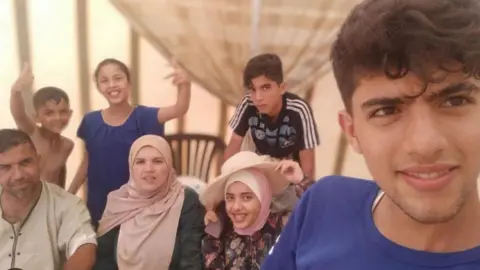 al-Dalou family photograph
al-Dalou family photograph
Sha'aban al-Dalou - seen here in a selfie he took with members of his family - was killed when an Israeli strike set fire to his tent in central Gaza
Warning: This piece contains graphic descriptions of death and injury
There is no conscience. There is no humanity. There are only leaders who watch and do not act.
This is what Ahmed al-Dalou believes, as the images of his family burning replay in his mind. He says his life is gone. It died in the inferno of al-Aqsa compound with his boys and wife in the early hours of Monday 14 October.
In front of him on the ground is a shroud, wrapped around the body of Abdulrahman,12, his youngest son.
The child lingered in agony for four days after the fire, sparked by an Israeli strike. The day before he died Ahmed saw him in hospital and he was able to tell his father: “Don’t be worried, I am OK dad… I’m fine. Don’t be afraid.”
Ahmed is half speaking, half crying, as he talks of what has been taken from him.
“Three times I tried to pull him [Abdulrahman] out of the fire, but his body fell back into it.”
His older brother, Sha'aban, 19, and his mother, Alaa, 37, both died on the night of the fire.
Sha'aban became a new symbol of Gaza’s terrible suffering. Images of him writhing in agony as he burned to death in the family’s tent were shared around the world on social media.
There are burns all over Ahmed’s face and hands. The tone of his voice is high, a keening sound. Of the anonymous pilot who sent the missile, and the leaders who gave him orders, Ahmed said: “They broke my heart, and they broke my spirit… I wish the fire had burned me.”
The strike happened at about 01:15 local time last Monday (23:15 BST on Sunday).
The Israeli military said it was targeting a Hamas "command and control" centre in the al-Aqsa hospital compound in Deir al-Balah, central Gaza Strip.

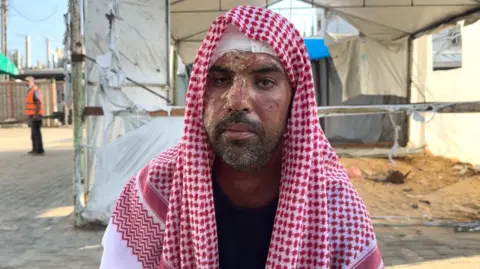
Ahmed al-Dalou survived the fire which burned through tents at the al-Aqsa complex - but suffered burns to his face and hands trying to rescue his family
Four people were killed immediately and dozens more wounded, including many with severe burn injuries. The Israel Defense Forces said it was “reviewing the incident”.
A spokesperson for the White House told CBS News, the BBC's US partner, that footage of the fire was “deeply disturbing” and called on Israel to do more to protect civilians.
“Israel has a responsibility to do more to avoid civilian casualties - and what happened here is horrifying - even if Hamas was operating near the hospital in an attempt to use civilians as human shields.”
The US and other powers, including Britain, have expressed concern about civilian casualties since the early stages of the war.

 Reuters
Reuters
Palestinians tried to battle the fire which tore through tents being used by displaced people
People are burned to death, blown to pieces, and shot every day in this war.
Most of the time the death agonies happen away from the cameras. It is the frantic search for survivors in the rubble, the dramatic scenes at hospitals, the endless stream of funerals, that are captured by cameras.
But the death of Sha'aban al-Dalou was different. His hand can be seen, reaching out of the inferno, a figure wrapped in flame, writhing and beyond the reach of any help.
In the days following his death Sha'aban’s own videos and photographs emerged. He was a typical teenager of his generation, aware of the power of social media, adept at recording his daily life.
The burning figure from the night of fire appeared to the world as an articulate, intelligent teenager, a software engineering student, a young man who took care of his family planning for a new life outside Gaza. He filmed himself donating blood and encouraged others to do the same.
“We saw so many injuries, many children are in dire need of blood… All we demand is for a ceasefire and this tragedy to end.”
We are only able to tell the story of al-Dalou family because of our own local journalist who went to meet the survivors. International journalists from media organisations, including the BBC, are not given independent access to Gaza by Israel.
In a video recorded in the tent where he died Sha'aban described how his family had been displaced five times since the war began a year ago. He had two sisters, and two younger brothers.
“We live in very hard circumstances,” he said. “We suffer from various things such as homelessness, limited food, and extremely limited medicine.”
In the background, as he speaks, there is the loud mechanical hum of an Israeli observation drone, a constant in the daily and nightly soundtrack of Gaza.
The surviving brother of Sha'aban and Abdulrahman, Mohammed al-Dalou, told the BBC that he had tried to go into the flames to rescue his older brother.
But other injured people had held him back, fearing he too would be killed. Mohammed did not sleep in the family tent, but outside on the street where he kept watch over their piled belongings.
“I was screaming for someone to let me go, but in vain… My brother’s leg was trapped and he couldn’t free himself. I think you saw it in the video. He was raising his hand.
"That was my brother. He was my support in this world.”
Sha'aban would come and wake him for prayers in the morning with a bottle of water and he would tell him: “I’ll work for you.”

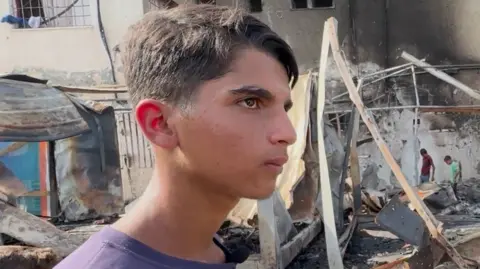
Mohammed al-Dalou saw his loved ones die in the fire
Mohammed recalled how the brothers set up a stall at the gates of the hospital selling food that the family made.
“We managed everything with our hard work. Everything we had was from our effort. We would get food and drink… then everything was lost.”
He saw the burned bodies, but could only identify his mother. Although her remains had been mutilated by fire, he recognised a distinctive bracelet.
“Without it, I wouldn’t have known she was my mother. Her hand was detached from her body, but the bracelet was still on it. I took it off her hand.”
This is his only memento of the woman who was “the kindness in our home".
The al-Dalou family is in shock. The survivors mourn the dead. Our BBC colleague asked Mohammed about the psychological cost of seeing his loved ones die.
“I can’t describe it. I can’t describe how I felt. I want to explain it to people, but I can’t. I can’t describe it. I saw my brother burning in front of me, and my mother too.”
Then, as if he is posing a question on behalf of the dead, he asks: “What more do you need, and you stay silent? You see us burning, and you stay silent.”
Additional reporting by Haneen Abdeen and Alice Doyard

 2 settimane fa
6
2 settimane fa
6


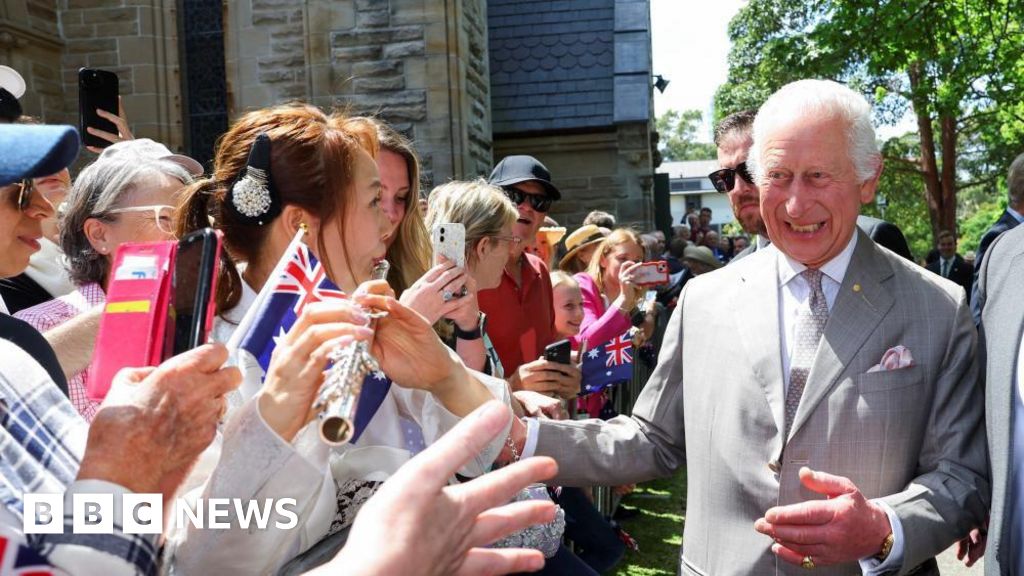







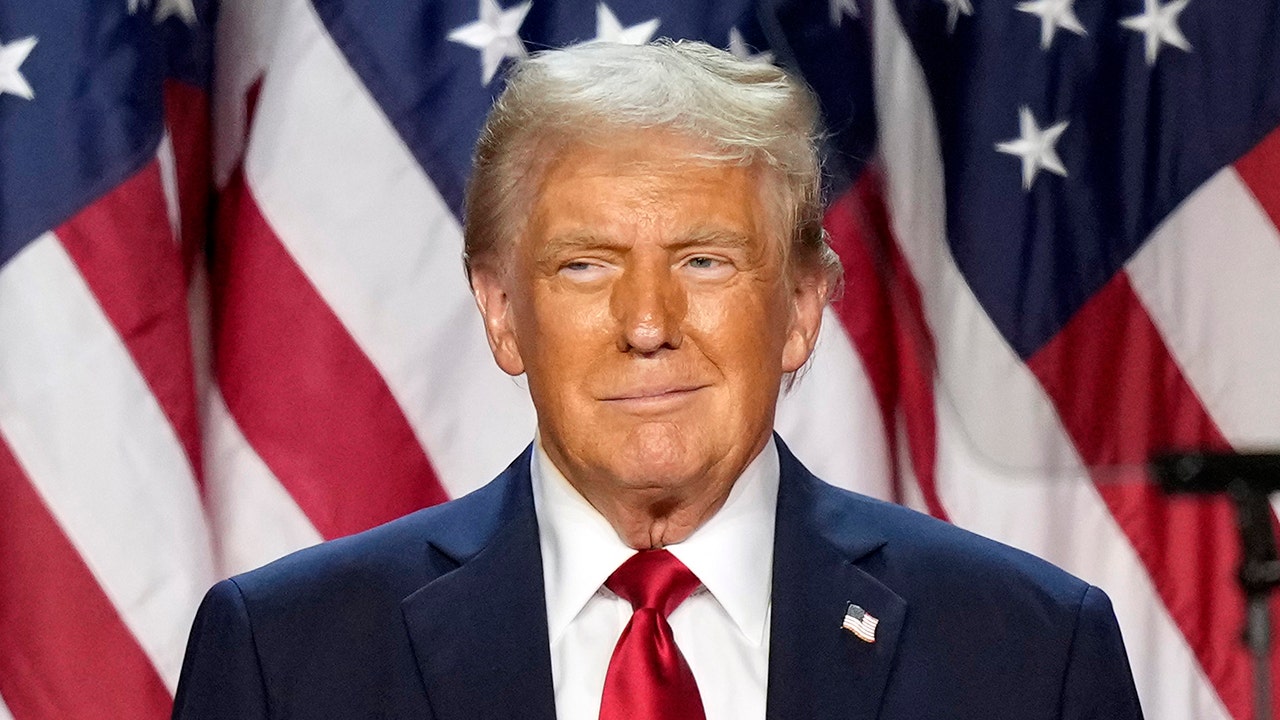

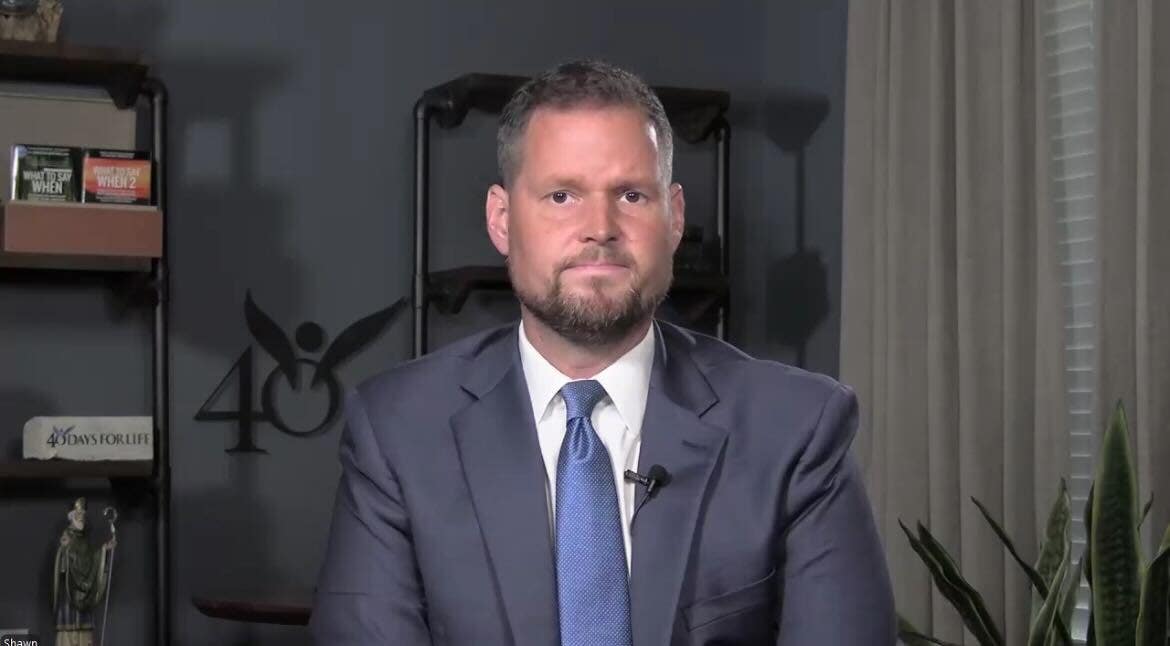
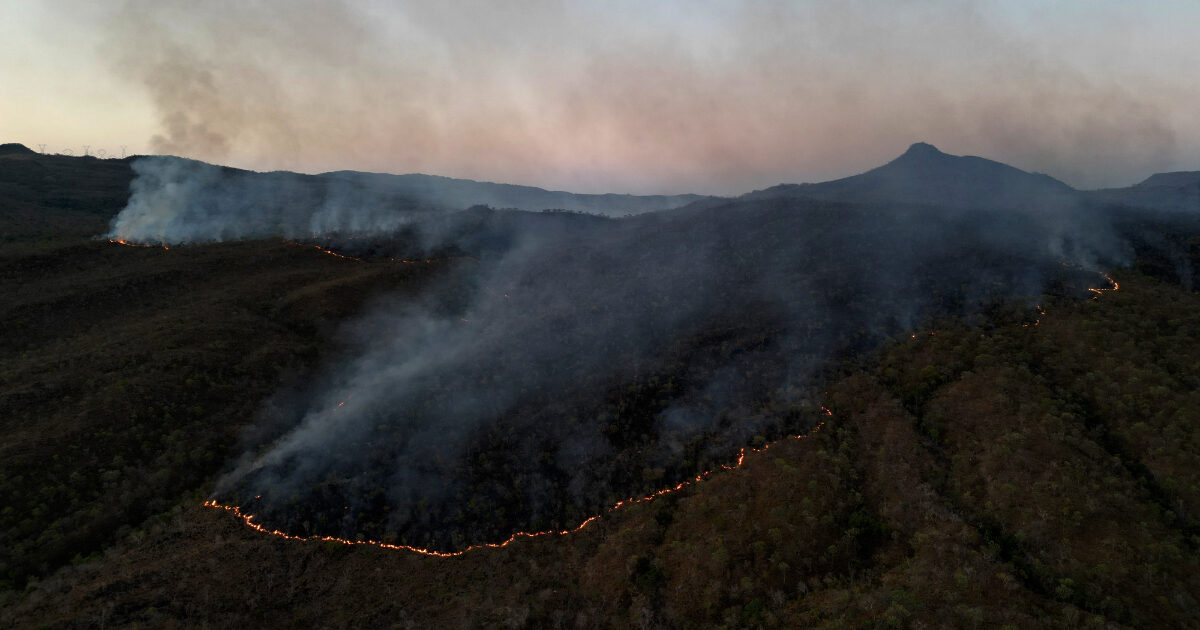

 English (US) ·
English (US) ·